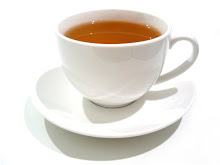I have had a very culturally bereft week, I am afraid. We went away for a city break and I mainly shopped and quaffed wine which, although delightful pursuits both, caused me to neglect my book reading, film watching and pop medleys on the hairbrush microphone.
The thought of people deriving joy from bird watching used to make me weak with mirth. I once went over to some one's house and his parents had special high chairs which they placed by the window especially for the purpose of spying on blue tits and thrushes. Ha! I thought that this was the saddest, most ludicrous thing that I had ever seen and my friend was extremely embarrassed about these, the uncoolest chairs in the world. Now I quite want them. Birds are great and we have a tame blackbird who we spy on like a couple of creeps as he leaps over our flowers and pecks at crumbs and worms.
Musing upon gardens has led me to look out Weeds and Wild Flowers, a collaboration between poet Alice Oswald and printmaker Jessica Greenman. The poems and etchings are all about flowers with titles such as Stinking Goose Foot, Narcissus, Bastard Toadflax and Rambling Rose complemented by etchings of orchids, wildflowers, foxgloves, nettles and snowdrops.
The worked plate is placed into a bath of acid and the exposed sections are corroded by the acid while the wax coating protects the rest of the plate. Some printmakers use feathers to brush the bubbles of fizzing acid away from the plate so that they can judge how far the plate has been bitten into.
This resulting positive image, when the plate is cleaned, is recessed from the surface of the plate and therfore, ink needs to be rubbed into the deep grooves before damp paper is placed over the plate and the whole thing is rolled through a printing press and squeezed between blankets and a roller. It is only when the paper is removed on the other side that the artist can see if their labour has been worth it and the image works.
I am particularly impressed by the etchings that Jessica Greenman has made which contain only hand-lettered versions of Oswald's poems as it is very difficult to get an entire page of lettering right when you are scratching its mirror image into a black surface revealing silver letters. I have spotted one mistake but that is pretty good going.
The poems are anthropomorphic. Bastard Toadflax is a 'Ponderous, obstinate, cold skinned person', Narcissus relates her own tale ( 'yes once I was half frail, half glittering...I was half skin half breath') and Hairy Bittercress is described as a drunk who sits in watching TV who 'when she pulls off her tights ... sits with her white feet bare and her legs a-prickle with hair'.)













No comments:
Post a Comment